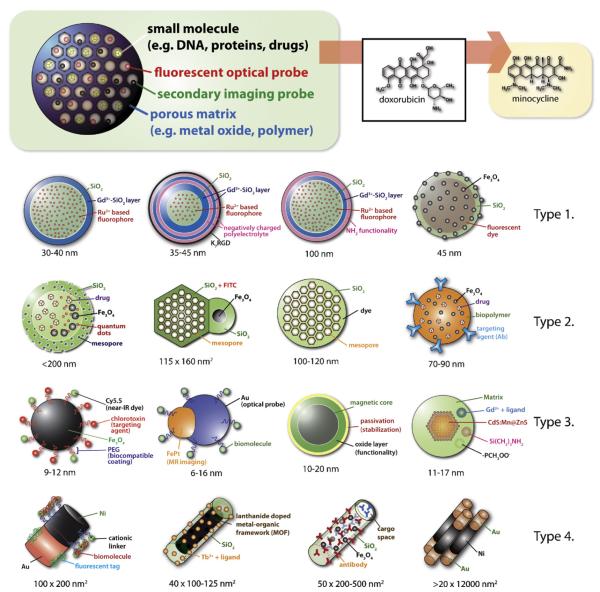Fig. 9.
Multifunctional nanoparticle systems (MFNPS) for biomedical applications. MFNPSs can be divided into four distinctive types. Type 1 is non-porous but spherical SiO2 based sub-100 nm nanoparticles with two or more components. Type 2 is sub-200 nm spherical nanoparticles that is either porous or can incorporate and, in time, release small molecules such as drug molecules. Type 3 is sub-20 nm nanoparticles with functionalizable ligands or biomolecules stabilized (passivated) onto the nanoparticles and are, in most cases, first synthesized in organic conditions which offer good size control and then phase exchanged to become dispersable in aqueous media. Finally, type 4 is non-spherical nanoparticle systems that have multiple components such as fluorescent tags and antibodies. Illustrations were prepared based on data, schemes, and figures appearing in the references of Table 5 with permission.

